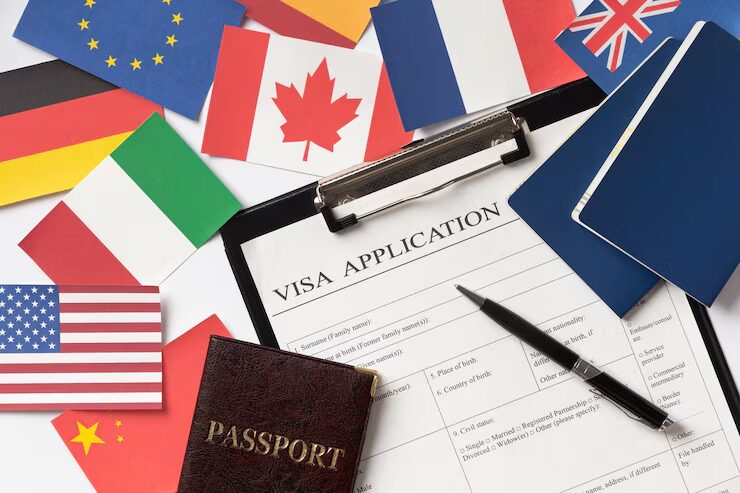If you are a U.S. citizen seeking to bring your foreign-born child to the United States, you may encounter the terms CR2 and IR2 visas. These visa categories are part of the family-based immigration system, providing a pathway to lawful permanent residence (green card) for eligible children of U.S. citizens.
CR2 and IR2 Visas: Key Differences
Both the CR2 and IR2 visas aim to unite U.S. citizens with their children. The key difference lies in whether the U.S. citizen parent was married to the child’s foreign-born parent for less than two years at the time that marriage legally ended (through death or divorce).
- CR2 Visa: For unmarried children under the age of 21 whose U.S. citizen parent was married to the child’s foreign-born parent for less than two years at the time that marriage ended. The “C” in CR2 signifies “conditional resident” status. The child’s permanent residency is initially conditional and tied to the U.S. citizen parent’s marriage.
- IR2 Visa: For unmarried children under the age of 21 of U.S. citizens where the U.S. citizen parent has been married to the child’s foreign-born parent for at least two years, or the child was born within a marriage that lasted at least two years. The “IR” in IR2 stands for “immediate relative.” A green card obtained through an IR2 visa grants permanent residency from the start, without any conditional period.
Both the CR2 and IR2 are classified as “immediate relative” visas, meaning they are not subject to annual numerical limitations. This generally leads to faster processing times compared to preference-based family immigration categories.
Here’s a structured table summarizing key information about CR2 and IR2 visas:
| CR2 Visa | IR2 Visa | |
|---|---|---|
| Type of Visa | Conditional Resident Child Visa | Immediate Relative Child Visa |
| Who It’s For | Unmarried children under 21 whose U.S. citizen parent was married to the child’s foreign-born parent for less than two years at the time that marriage legally ended (by death or divorce). | Unmarried children under 21 of a U.S. citizen, where the U.S. citizen parent has been married to the child’s foreign-born parent for at least two years, or the child was born within a marriage that lasted at least two years. |
| Green Card Eligibility | Leads to conditional permanent residency. The child’s status is dependent on the U.S. citizen parent’s marriage. | Leads to immediate permanent residency. |
| Validity Period | 2 years, tied to the U.S. citizen parent’s conditional status. | Indefinite, no conditions on residency. |
| Application Process | Part of the family-based green card application process. | Part of the family-based green card application process. |
| Requirements | Proof of parent-child relationship, U.S. citizen parent’s status, legal documentation of the marriage and its termination (death or divorce) within two years, evidence the marriage was entered in good faith. | Proof of parent-child relationship, U.S. citizen parent’s status, legal documentation showing the U.S. citizen parent has been married to the child’s foreign-born parent for at least two years, or the child was born within a marriage that lasted at least two years. |
| Unique Features | The child’s initial residency is conditional and linked to the circumstances of the U.S. citizen parent’s marriage. | Provides a direct path to unconditional permanent resident status for the child. |
Essential Eligibility Requirements for CR2 and IR2 Visas
Meeting these fundamental criteria is essential:
- Parent-Child Relationship: A genuine biological or legal (e.g., adoption) parent-child relationship must exist between the U.S. citizen and the foreign-born child. Documentation such as birth certificates or adoption decrees is required.
- U.S. Citizen Status of Parent: The individual filing the petition must be a U.S. citizen. Lawful permanent residents petition for their children under different visa categories.
- Age Requirement: The child must be unmarried and under the age of 21 at the time of application and when entering the United States.
- Marital History of U.S. Citizen Parent (for CR2): For a CR2 visa, the marriage between the U.S. citizen parent and the child’s foreign-born parent must have legally ended (due to death or divorce) and must have lasted for less than two years. Evidence that the marriage was entered in good faith is also important.
- Marital History of U.S. Citizen Parent (for IR2): For an IR2 visa, the U.S. citizen parent must have been married to the child’s foreign-born parent for at least two years, or the child must have been born within a marriage that lasted at least two years.
- No Grounds of Inadmissibility: The child must not have any legal reasons that would prevent them from entering the United States, such as certain criminal convictions or health issues. Waivers may be available in some circumstances.
- Financial Support: The U.S. citizen parent must demonstrate the financial ability to support their child to ensure they do not become a public charge. This is typically shown through an Affidavit of Support (Form I-864).
The CR2/IR2 Visa Process: Key Stages
The typical steps involved in obtaining a CR2 or IR2 visa are:
- Petition Filing (Form I-130): The U.S. citizen parent begins the process by filing Form I-130, Petition for Alien Relative, with U.S. Citizenship and Immigration Services (USCIS). This filing must include proof of the U.S. citizen parent’s status and evidence of the parent-child relationship, as well as documentation related to the marriage (and its termination, if applicable for CR2).
- National Visa Center (NVC) Processing: Once the I-130 is approved, the case is sent to the National Visa Center (NVC). The NVC collects the necessary fees, required forms (such as the DS-260, Online Immigrant Visa Application), and supporting documents from both the U.S. citizen parent and the child. The NVC ensures the case is documentarily qualified and ready for the consular interview.
- Interview and Medical Examination: The child applicant is scheduled for an interview at a U.S. embassy or consulate in their country of residence. Prior to the interview, the child must undergo a medical examination by a panel physician approved by the U.S. embassy or consulate.
- Visa Issuance: If the consular officer determines that the child is eligible for the visa, it will be issued in their passport, allowing them to travel to the United States. Children entering on a CR2 visa will become conditional permanent residents upon entry, while those entering on an IR2 visa will become immediate permanent residents.
Tips for a Smoother CR2/IR2 Application
Increase your chances of a successful application with these recommendations:
- Gather Comprehensive Documentation: Collect all required documents (birth certificates, marriage certificate of parents, divorce or death certificate if applicable, proof of U.S. citizenship, etc.) early in the process. Ensure that any foreign language documents are accompanied by certified English translations.
- Be Truthful and Accurate: Provide honest and precise information on all application forms and during the consular interview. Any misrepresentation can have severe consequences.
- Follow Instructions Meticulously: Pay close attention to all guidelines and deadlines provided by USCIS and the NVC.
- Consider Legal Counsel: An experienced immigration lawyer can provide invaluable guidance throughout the complex process, ensure proper preparation of all documents, and represent you if any complexities or challenges arise.
Conclusion
Bringing your child to the United States through a CR2 or IR2 visa involves specific requirements related to your marital history and your relationship with your child. Careful preparation and understanding the nuances of these visa categories are essential. Consulting with an experienced immigration attorney like Sadri Law can provide tailored advice and support to navigate this process successfully.





